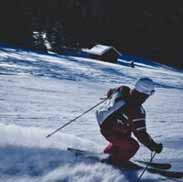Antibiotic Resistance In Bacteria Flashcards, test questions and answers
Discover flashcards, test exam answers, and assignments to help you learn more about Antibiotic Resistance In Bacteria and other subjects. Don’t miss the chance to use them for more effective college education. Use our database of questions and answers on Antibiotic Resistance In Bacteria and get quick solutions for your test.
What is Antibiotic Resistance In Bacteria?
Antibiotic resistance in bacteria is one of the most pressing global public health issues of our time. Antibiotics are essential tools for treating bacterial infections, but more and more strains of bacteria have become resistant to antibiotics due to overuse and misuse. This means that many diseases once easily treatable with antibiotics no longer respond to them, making it difficult or impossible to cure certain infections. When people take antibiotics to fight an infection, the strongest bacteria may survive while the weaker ones die off. These resistant bacteria can then spread their drug-resistant genes throughout populations of bacteria, making them even harder to treat. The problem is compounded by doctors overprescribing antibiotics and patients not taking medication as prescribed or sharing their medications with others, which allows the resistant bacteria to spread even further. Antibiotic resistance has been linked to increased mortality rates from diseases like pneumonia and tuberculosis, increased hospital stays due to treatment-resistant infections, and higher healthcare costs incurred by treating these hard-to-treat infections. To address this growing problem, it’s important that we all do our part in reducing antibiotic resistance. This includes only taking antibiotics when necessarynot before visiting a doctorand adhering strictly to your doctor’s instructions if they prescribe you an antibiotic regimen. It’s also important that healthcare providers avoid prescribing antibiotics unless absolutely necessary and inform patients about why it is important not take them unnecessarily. By following these guidelines and educating ourselves about antibiotic resistance in bacteria we can help protect our global health for years to come and reduce the burden on healthcare systems worldwide.








